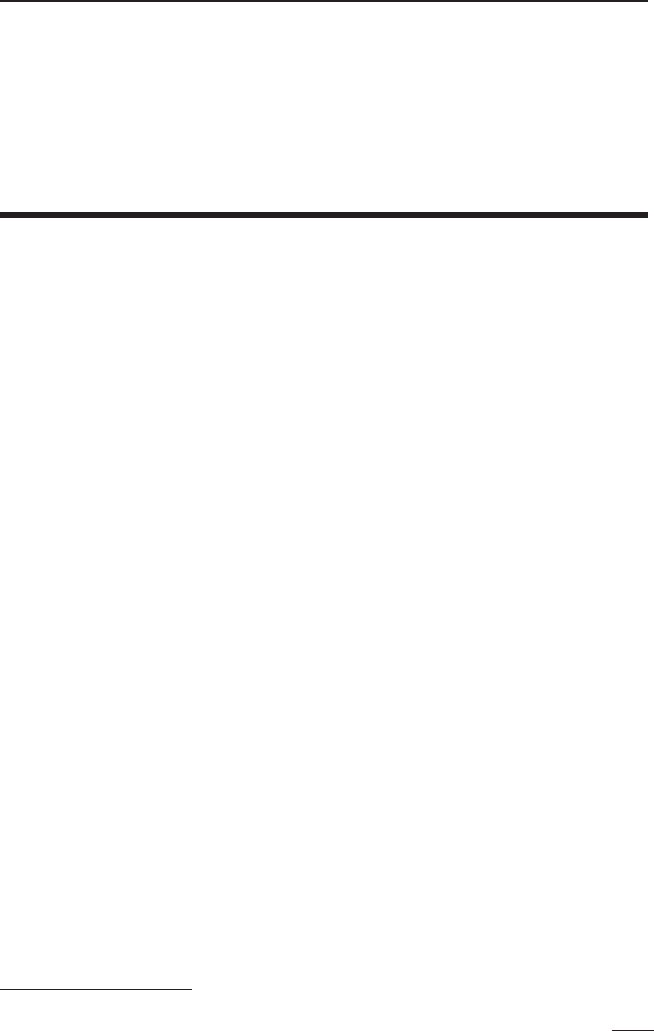
475
Chapter 11
Software Reliability
Measurement and Prediction
*
A
- discussed in Chapter 10
identied soware reliability as a key high-level attribute. In
Chapter7, although we did not refer to reliability explicitly, the main
examples treated soware “quality” as a surrogate for soware reliability.
So, it is not surprising that soware reliability has been the most exten-
sively studied of all the quality attributes. Quantitative methods for its
assessment date back to the early 1970s, evolving from the theory of hard-
ware reliability. In this chapter, we describe these methods, highlight-
ing their limitations as well as their benets. Building on this work, we
describe an approach to soware reliability assessment that can provide
us with truly accurate predictive measures, providing we have been able to
collect data about past failures. e approach to measuring soware reli-
ability described in this chapter can also be incorporated with the causal
modeling approach described in Chapter 7 to achieve improved decision
making by soware quality and test managers, even when there is mini-
mal data available.
We begin by introducing the basics of reliability theory. en we address
what has become known as the soware reliability growth problem: esti-
mating and predicting the reliability of a program as faults are identied
and attempts are made to x them. In the approach described here, no
individual technique is singled out for unreserved recommendation from
*
Including contributions from prior editions by Bev Littlewood (City University, London).
476 ◾ Software Metrics
many that have been proposed over the years. We explain in some detail
that we reserve judgment, because empirical observation suggests that no
such technique has been able to consistently give accurate results over dif-
ferent data sources. Instead, we emphasize the need to examine the accu-
racy of the actual reliability measures, obtained from several techniques
in a particular case, with a view to selecting the one (if any) that yields
trustworthy results.
It is important to note that no current methods can feasibly assure
soware systems with ultra-high reliability requirements. However, the
techniques we describe apply to the vast majority of the systems we build:
those with relatively modest reliability requirements. Our suggested
approach is more computationally intensive than simply adopting a single
technique, and it involves some novel statistical techniques. However, we
explain the new methods intuitively, and you can apply the methods in
practice by using commercially available soware tools. e result is reli-
ability measures that are known to be trustworthy; so, this approach is
well worthwhile.
11.1 BASICS OF RELIABILITY THEORY
e theory of soware reliability has its roots in the more general
theory of systems and hardware reliability; the hardware approaches
are described in many textbooks (e.g., Rausand and Hoyland 2004;
Modarres etal. 2010; Birolini 2007). We apply many of the basic con-
cepts of this general theory to soware reliability problems in the dis-
cussion in this chapter.
e basic problem of reliability theory is to predict when a system will
eventually fail. In hardware reliability, we are normally concerned with
component failures due to physical wear; they can be caused, for exam-
ple, by corrosion, shock, or overheating. Such failures are probabilistic
in nature; that is, we usually do not know exactly when something will
fail, but we know that the product eventually will fail; so, we can assign
a probability that the product will fail at a particular point in time. For
example, suppose we know that a hose will eventually dry out, and that
the average usage time for the hose is 3 years. In other words, we can
expect that some time around the 3-year mark, the hose will begin to
leak. e probability of failure of the hose does not go from 0 on day 1094
(1 day short of 3 years) to 1 on day 1095; rather, the probability may start
at 0 on day 1 and then increase slowly as we approach the 3-year mark.
We can graph these daily probabilities over time, and the shape of the
Get Software Metrics, 3rd Edition now with the O’Reilly learning platform.
O’Reilly members experience books, live events, courses curated by job role, and more from O’Reilly and nearly 200 top publishers.

